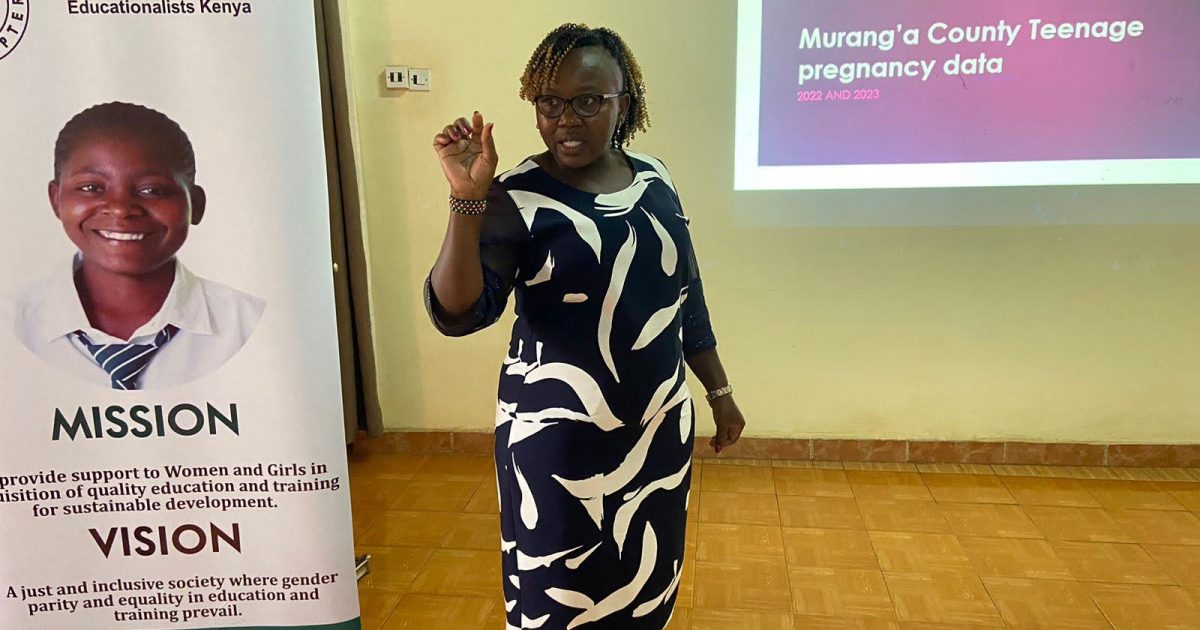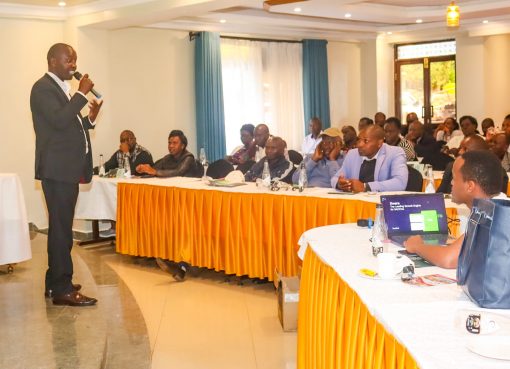Murang’a County stakeholders have strategized to implement a multi- sectoral collaboration plan in a bid to scale up efforts to end teenage pregnancy in the county.
The stakeholders comprised of government representatives, community leaders, educators and health professionals discussed strategic interventions and policies conducive to decreasing teenage pregnancy rates and re- entry of teenage mothers back to school.
Murang’a County Reproductive Health Coordinator Caroline Macharia speaking during a multi stakeholder sensitization meeting Tuesday in a Murang’a hotel, said that last year, the county registered some 3,500 young girls with teenage pregnancies, contributing to high numbers of girls dropping out of school.
“In Murang’a County, out of 100 women who are pregnant, seven are teenagers. These are girls who ought to be in school” she said, adding that sub-counties in Murang’a South and Kigumo were hardest hit by teenage pregnancies, among young girls between the ages of 10 to 19 years.
Macharia noted that as much as the prevalence rate for the county is way below the national level, the stakeholders, who have been engaging during sensitization forums, have admitted that they need collaborative efforts to reduce these numbers.
“There are other counties with higher numbers of teenage pregnancies. But as a county, we feel that 7 percent is high and we need to reduce it to zero,” she said, adding that this is a critical issue that affects the development and empowerment of young women.
Macharia said some of the mitigation measures they have put in place to end teenage pregnancy include holding community dialogues on quarterly basis, engaging parents, boys and girls in sensitization forums as well as Community Health Promoters (CHPs) who reach out to communities.
She observed that inhibitive social and cultural practices such as gender based violence (GBV), FGM, child marriage also have a direct impact on teenage pregnancy.
According to the Kenya Demographic Health Survey 2022 report on GBV, the prevalence rate for Murang’a County is 24 percent, compared to the national prevalence rate at 13 percent.
“Common forms of GBV in the county include rape, defilement, incest, emotional violence among others,” she said. adding this number is way above the national prevalence rate.
Macharia observed that when we are discussing matters of teenage pregnancy, it presents as a triple threat that is teenage pregnancy, GBV and HIV.
“If we are able to fight the ‘triple threats’, then the health indicators for maternal health and more so for the teen mothers, will be improved,” she said, adding that for this teenage girl who is pregnant, chances of her contracting HIV are very high.
Murang’a County Assistant Director of Education Margaret Tipatet said the Ministry has school re-entry guidelines that provide a framework to enhance reentry for learners who drop out of school because of teenage pregnancy.
“We are trying to avoid wastage as school dropout wastes human and financial resources. To address these issues, school re-entry guidelines for learners who drop out of school are necessary,” she said.
Tipatet said the guidelines provide a framework to enhance re-entry for girls who drop out of school due to teen pregnancy to improve retention, transition, and completion rates at all levels of basic education.
“Girls who became pregnant shall be admitted to the same class they were before they left the school to deliver the baby unconditionally,” she said, adding that early pregnancy has been shown to be the main reason for school drop out of adolescent girls.
However, she noted that, if the learner wishes to join another school, she will be supported by the school head through the sub county director of education to gain admission into another school.
She divulged that circumstances that could lead to early pregnancy include but are not limited to lack of self-awareness of sexuality education, peer pressure, poverty, drugs and substance abuse, defilement and early marriages.
Imarisha Msichana project by Forum for African Women Educationalists (FAWE) in partnership with Mastercard Foundation aims at reducing cases of teenage pregnancy as well as ending early child marriages with keen focus on re-entry of teenage mothers back to school.
FAWE Kenya Murang’a County coordinator Pauline Masese said the organization is ready to support initiatives geared towards reducing teenage pregnancies and fostering re-entry of teenage mothers to school.
Masese said some of the interventions include collaboration with stakeholders in the generation of credible and acceptable data on teenage pregnancies in Kenya that advises on apt solutions; championing for re-entry of girls to school.
“We encourage parents, school heads, national government administration officers and the community to report cases of teenage pregnancies to the relevant authorities to make sure that our girls get justice,” she said, adding that any form of out of court settlement should be discouraged.
The Imarisha Msichana programme is being implemented in 20 counties in Kenya including Nakuru, Nairobi, Machakos, Elgeyo Marakwet, Kiambu, Garissa, Bungoma, Kakamega, Nyeri, Migori, Murang’a, Kajiado, Narok, Homa-Bay, Trans-Nzoia, Nyandarua, Busia, Meru, Siaya and Turkana.
By Anita Omwenga




